Vasto
Vasto, Vistas and Fish Soup
Vasto seems an appropriate word for the cauldron of steaming hot brodo di pesce placed on the table before us. It’s huge. Floating in the still bubbling broth are hunks of fish and shellfish. I’m not sure where to start.
Brodo di Pesce – a ritual
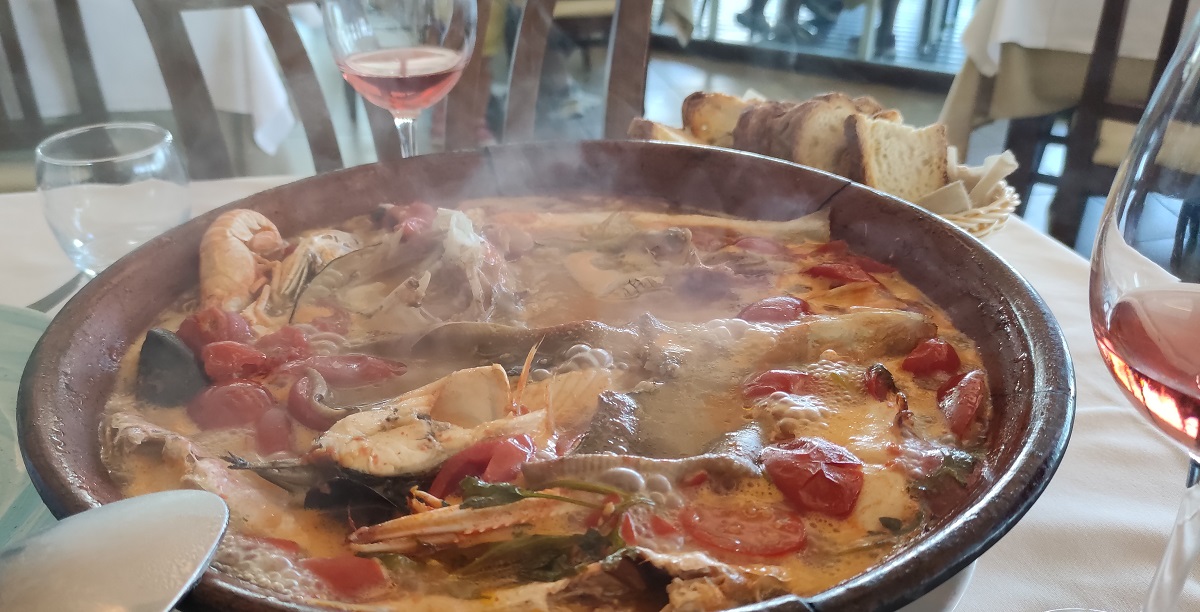
Our waiter explains the procedure. First, dip chunks of bread into the soup. Then eat the fish and shellfish. Finally, he will bring out some pasta to mix with the remaining broth. And voilà, three meals in one.
We have been issued with outsize blue bibs which the waiter ties with care behind our necks. Fearing that my reputation as a slitter has preceded me, I am relieved to see that everyoe about to embark on the brodo di pesce experience has been similarly prepared.
Eating fish soup is a serious, absorbing affair but that doesn’t stop me glancing round the restaurant. This Friday lunchtime every table is taken and the room resonates with lively chatter and the merry chinking of glasses and cutlery.
At the next table the waitress is explaining the day’s menu to a family of six – grandparents, parents and two youngsters. After announcing each item she waits patiently while the adults discuss its possible merits and failings. Occasionally a child butts in. Ordering seems to be a long, laborious process but the waitress is unfazed and answers all questions with good grace. This is, after all, Abruzzo, and what is a meal without the accompanying forensics?
The restaurant is only a few metres from the sea and a glassed-in terrace shields us from the spray from waves crashing against the rocks below. It’s a blustery day, with clouds scudding across the sky, and the terrace windows are shut tight against sporadic showers. Occasionally the sun bursts through, illuminating the sea and striping it with broad brushstrokes in various shades of blue.
We pick the fish bones clean. It is when the waiter arrives with the pasta that we give up.

To the embarrassment of marito, who like most Italians deplores waste but unlike some still balks at the ‘doggy-bag’ system, I ask for a container to take the pasta and the rest of the brodo home
Punta Penna
Outside, we take advantage of a break in the rain to walk to the lighthouse at Punta Penna, just north of town.
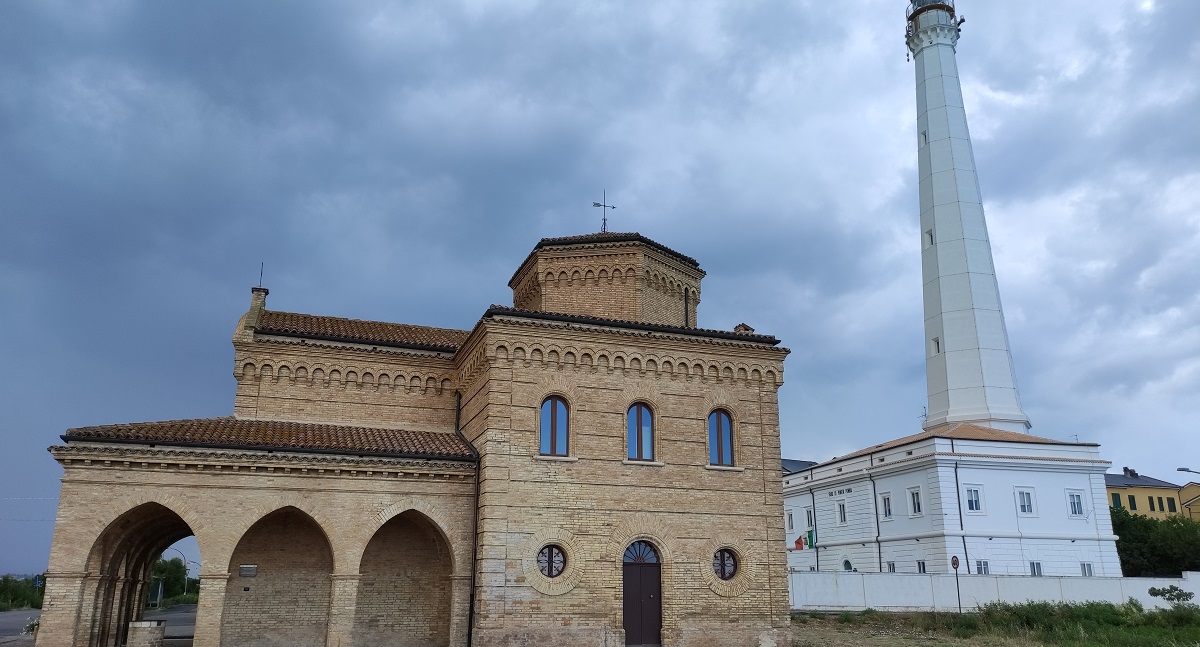
This is the second tallest lighthouse in Italy, rebuilt following its partial destruction by retreating Germans in 1944. The adjacent church, Santa Maria, is closed when we visit.
Punta Penna is also a nature reserve with a sandy public beach, but as the rain starts up again we head for the centre of Vasto instead.
The old town of Vasto is built 144 metres above sea level, in a setting that fully justifies its name. From up here the sky is vast, the sea and the sweep of the land immense.

Below is Vasto beach with its obligatory rows of umbrellas, while way down the coast we can see Abruzzo’s neighbouring region, Molise. Vasto is the last but one town on the Trabocchi Coast and in Abruzzo.
A Tragic Awakening
Clifftop life carries risks, as the poor people of Vasto found to their dismay on a February morning in 1956. It had been the coldest winter in living memory, and the coast had been battered for days by snow blizzards.
Around 20 February the temperatures rose slightly and the snow began to melt. Two days later the Muro della Lame along the cliff crumbled and fell with a crash to the bay below, taking with it about 40 houses. Unfortunately – or fortunately as it turned out – cracks had been appearing for months and the most vulnerable homes had already been evacuated, not without protest from their impoverished inhabitants.
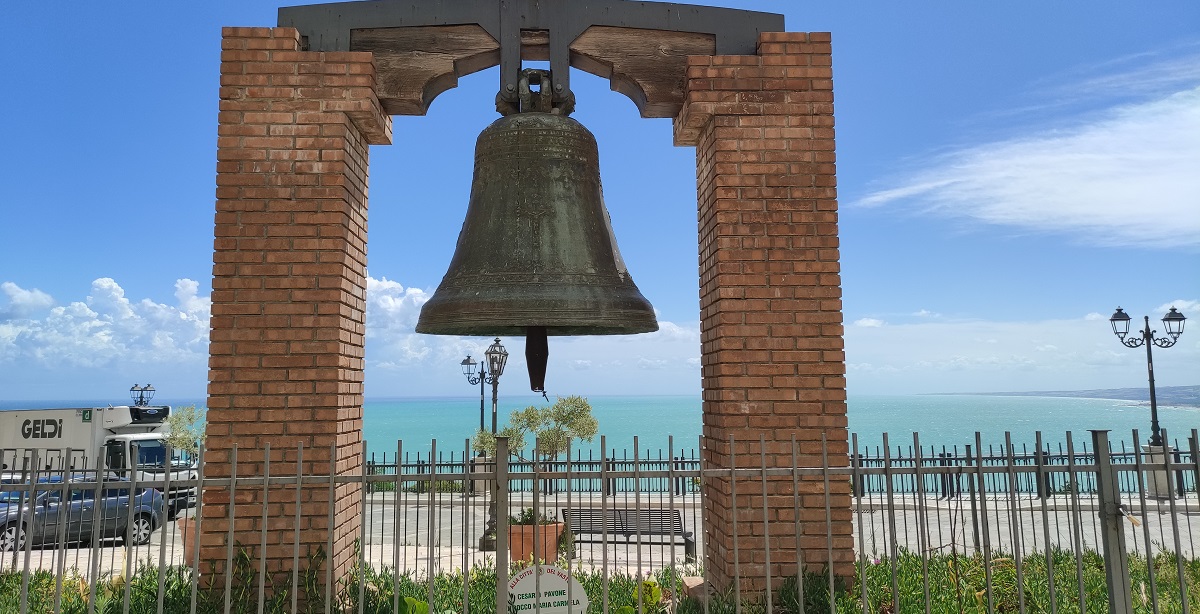
At the site of the landslide a huge bell now commemorates the tragedy. All that remains of the church of San Pietro is a jagged wall and a plaque.
Ambling along the cliff top
Our path circles inland around the fourteenth century Palazzo D’Avalos, the home of the Marquis who ruled the town in the sixteenth century, and then returns to the cliff again.

This part of the walk, restored and irresistible, is called the Loggia di Amblingh. Amble we do, though the path is actually named after an important member of the house of D’Avalos who is buried here in Vasto in the church of Santa Maria Maggiore.

Pizzerias and restaurants line the path and belvedere. I have eaten here in the past, including on one unforgettable occasion when we were all entranced by the rise of a huge orange moon which sailed into the sky from the sea.
Leaving the cliff path, we walk back inland through the town. An acquaintance remembers visiting Vasto with his grandfather when he was a boy and was so struck by the poverty and indigence of its inhabitants that he has never forgotten it. Now the town centre is pretty and neat, with airy spaces and clean buildings, tidy streets, and bars with tables outside.

Gabriele Rossetti
We visit the thirteenth century cathedral and come across a small central park surveyed by the statue of Vasto’s most famous inhabitant. Gabriele Rossetti was born in Vasto in 1783. A poet and literary critic, and professor at King’s College London, he was the father of the poetess Christina and the Pre-Raphaelite painter Dante Gabriel Rossetti.


The Roman Baths
Before leaving town we visit the site of the old Roman baths. Two young volunteers, who look as if they could still be in high school, show us round the small space not far from the clifftop, allowing us to admire up close the beautiful ivory mosaics depicting Neptune and various sea creatures.
The baths are of the ancient city of Histonium and date back to the first and second centuries, though they have only been discovered recently. In fact, the girls tell us, other mosaics may never come to light since they lie buried under the adjacent church.

After the fall of the Roman Empire, Histonium was rebuilt by the Lombards and given the name Guasto d’Aymone, meaning residence of Aymone, the ruler at the time. G in the local dialect was pronounced as a V, and so the town became Vasto.
Which is just as well, as Guasto means broken down and defective.
But for me the name Vasto will always conjure up its sweeping vistas and, of course, fish soup.
Vasto can be reached by the Autostrada Adriatica A14 and then SS16 Adriatica. We ate at Trattoria da Ferri, near Punta Penna.


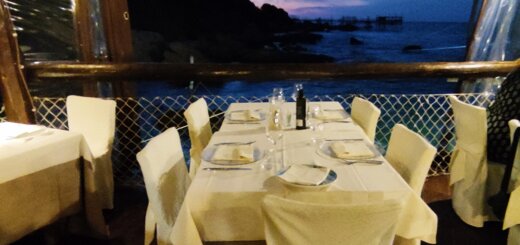
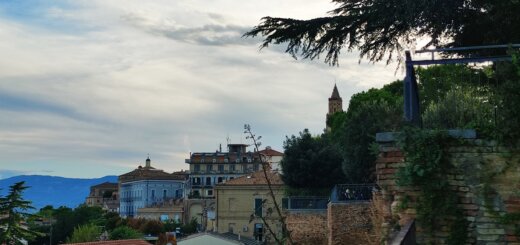
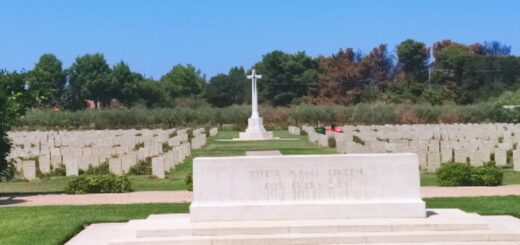

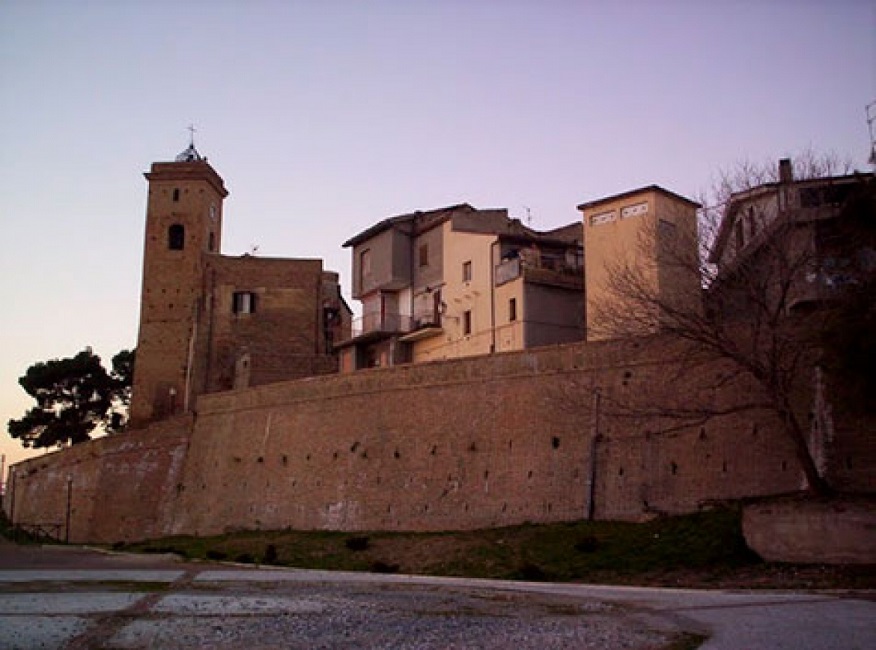
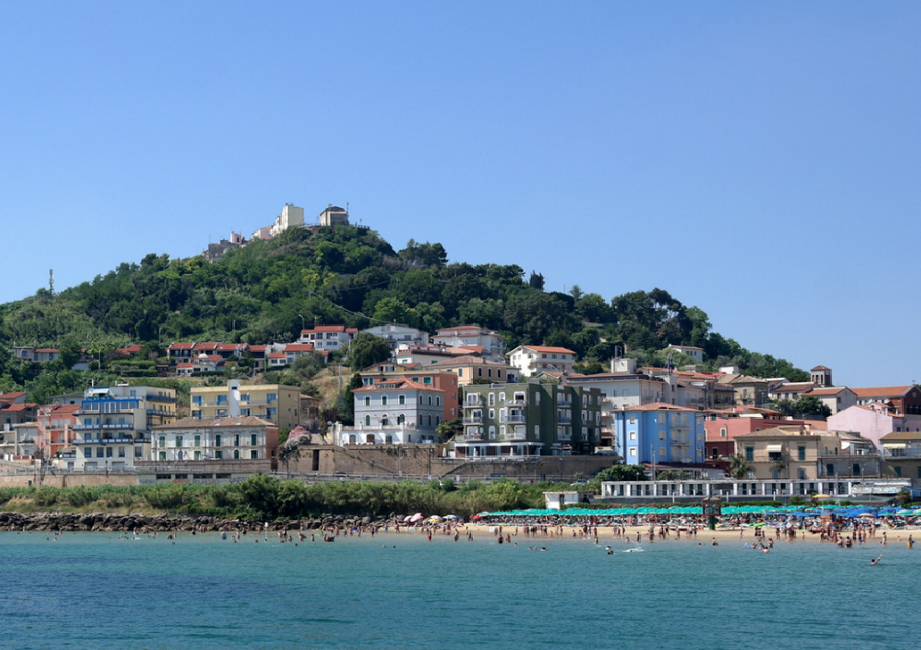
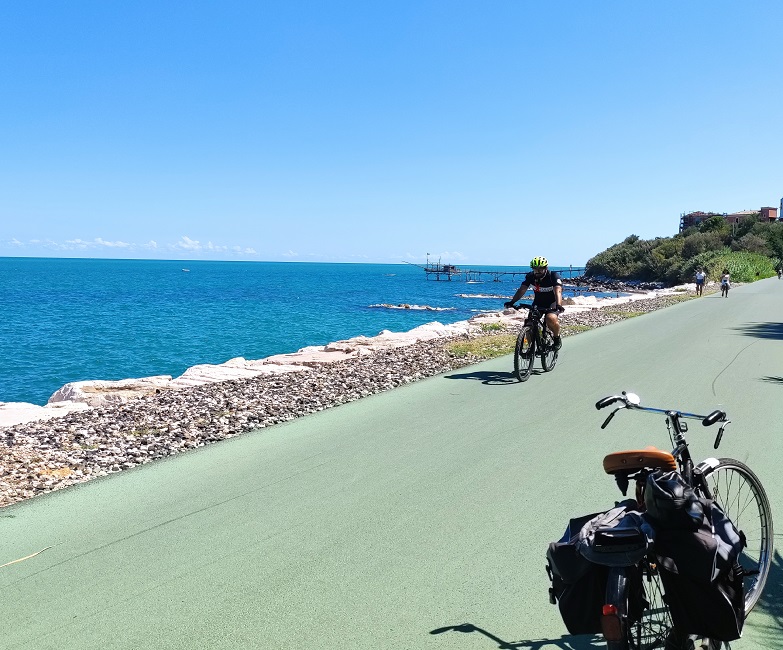
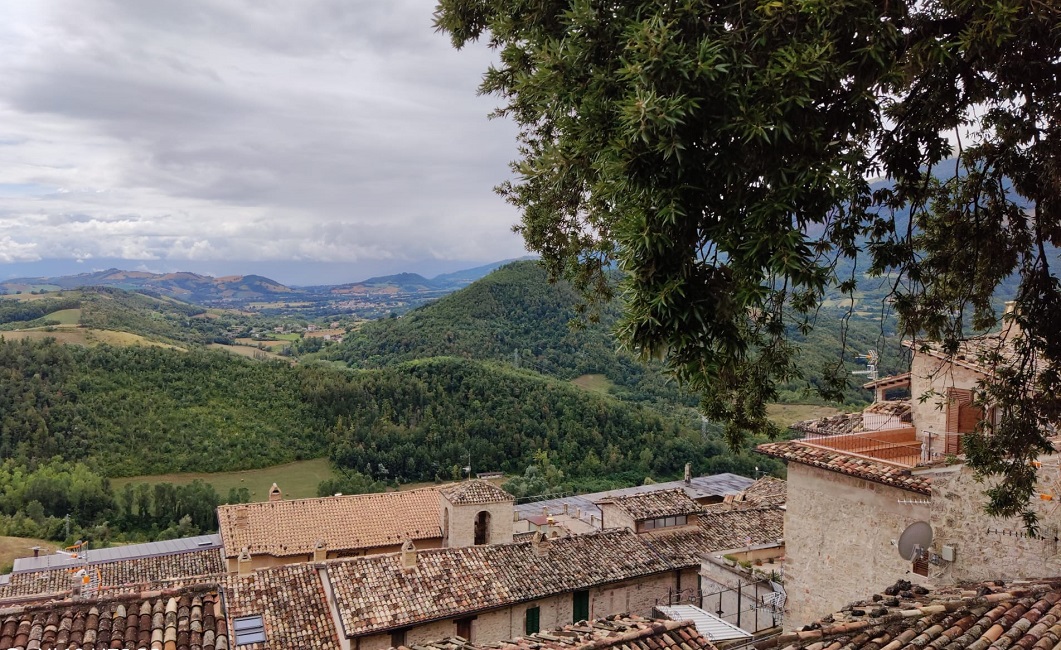
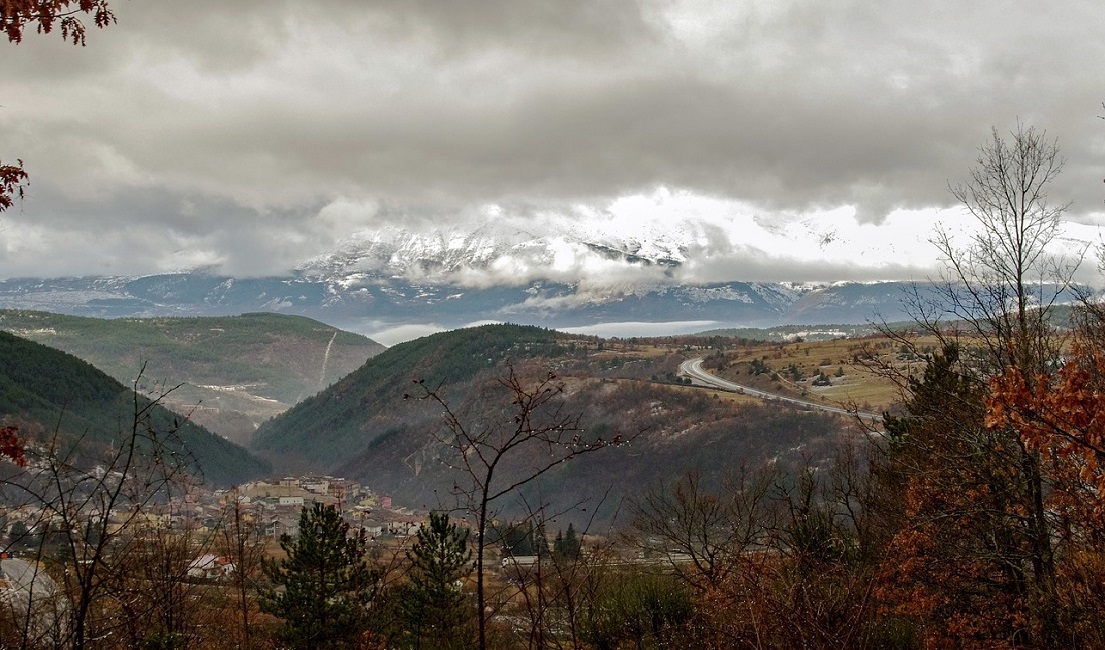

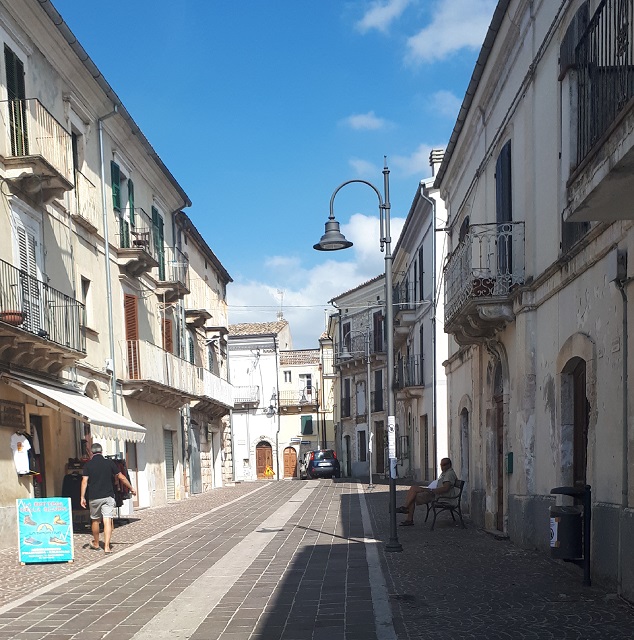
Grazie mille.
Grazie Mille